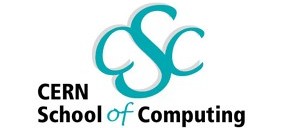|
Series:
Living OO Design
Lecture:
Introduction to UML for Developers and OO Best
Practices
A few questions addressed
in the lecture |
|
|
|
Monday
8 March |
|
|
10:00 10:55 |
Lecture
1 |
Introduction
to UML for Developers and OO Best Practices
|
Tim Muenchen
Bergische Universitšt Wuppertal - Germany |
|
Introduction to the series
of two lectures
In High Energy Physics, as in most areas of Science, using
Computers to simulate, analyse and interpret physical data
has become indispensable in the last decades, as the sheer
amount of data one has to process has grown to dimensions
difficult to handle manually. On top of that, the usage of
object orientation is on the advance, replacing legacy
programming languages like Fortran by modern ones like
(among others) C++, Java and Python.
Though, one can not just carry programming style and
concepts from procedural languages to object oriented
languages and hope to benefit from the advantages of this
new programming paradigm. Instead, there are numerous things
to keep in mind to produce working, error-free and
performing - but also understandable, maintainable and
expandable - object oriented software designs.
This series of two lectures aims to sensitize the "object
oriented programming physicist" to things he or she should be aware
of and keep in mind to fully utilize the OO-paradigm.
|
|
First lecture:
Introduction to UML for Developers and OO Best
Practices
In
this lecture, a powerful tool to express, communicate and
record software design concepts, ideas and structures is
briefly presented: the Universal Modeling Language.
Albeit being a complex and complete language to describe
most aspects of (not only) software design, we will focus on
the single most useful part of the UML when talking about
OO
best practices and patterns: the
Class Diagram. This
is then used in all of the rest of the series to visualize
the concepts presented.
The
main part of the lecture, then, focuses on ten best
practices every OO-developer should know. The best practices
and the reasons for them being crucial are described and
deepened by examples and anecdotes.
|
|
Audience and benefits
This series of two lectures
targets physicists designing and implementing physics
analysis code, event generators and the like in
object-oriented languages like C++, as well as more junior
developers of software infrastructure libraries used at
CERN.
On top of that, every interested programmer can
benefit from the concepts presented in these lectures.
In this first lecture, attendees will be sensitized to things to
know and keep in mind when designing software systems
to ensure the best possible quality of systems in
terms of maintainability, flexibility and extensibility,
comprehensibility and stability.
You will learn about a few simple rules to
adhere that will help in make your design better
in respect to those criteria, and what to avoid in
designing software.
Before that, the UML class diagram is introduced briefly as
means to communicate design concepts and to visualize the
Best Practices presented in this lecture, and the Design
Patterns in lecture 2.
|
|
Pre-requisite
Attendees should have basic knowledge about
object-oriented programming, concepts and idioms, as well as
object-oriented programming languages like C++ and Java."
|
|
Questions |
-
Universal Modelling Language:
what is it?
-
What are the ten
best
practices
OO-developers should know?
-
Design
Pattern:
reusable snippets
and not reusable libraries! What
does it mean?
-
Anti-patterns:
the opposite of design patterns!
What does it mean?
All the answers at
iCSC
at Lecture 1 and Lecture 2
|
|
|

